Accessible itinerary: the university area among history and art
Updated on 01 June 2020 From Fondazione Innovazione Urbana
The university area begins from via Zamboni, the historic road that descends from the Due Torri towards Porta San Donato. Along the way you come across museums, Renaissance palaces, churches and chapels of rare beauty.
On the other side of the street stands San Giacomo Maggiore Basilica. The width of the inside of the Basilica is a sharp contrast if compared to the narrow alleys of the ghetto. The buzz of the street outside, on the other hand, brings the visitor back to present times. Along the portico on the right in the direction of the Viali, we find the Oratorio di Santa Cecilia. It hosts periodical concerts as well as the cycle of Saint Cecily and her husband Valeriano, which consists of ten large frescoes that are also reproduced in relief. The reliefs can be visited under request. Near the Basilica there is also a nice hidden little garden.
Later, the pavement of the portico descends in long steps into Piazza Verdi, where the silence of the Ghetto is long forgotten. Proceeding with your walk, you find Piazza Scaravilli on your left. The square got its name from the one of a partisan who died fighting during the Italian Resistance.
After the square you meet Via delle Belle Arti and the Pinacoteca Nazionale di Bologna (National Gallery of Bologna), full of masterpieces dated back up to the 14th and the 18th Centuries. It offers only a limited number of works that can be touched, among which the relief of “Saint George and the Dragon” by Vitale da Bologna. When coming back to the centre, take Via del Guasto and follow a steep but brief way to visit the Guasto Gardens.
The way back towards Piazza Ravegnana can offer you the chance to take a break in one of the many dehors you will find on your path.
The starting point is Piazza di Porta Ravegnana, the little square behind the Two Towers. There there is an old map that is hard to read and written in a very complex language, without images provided.
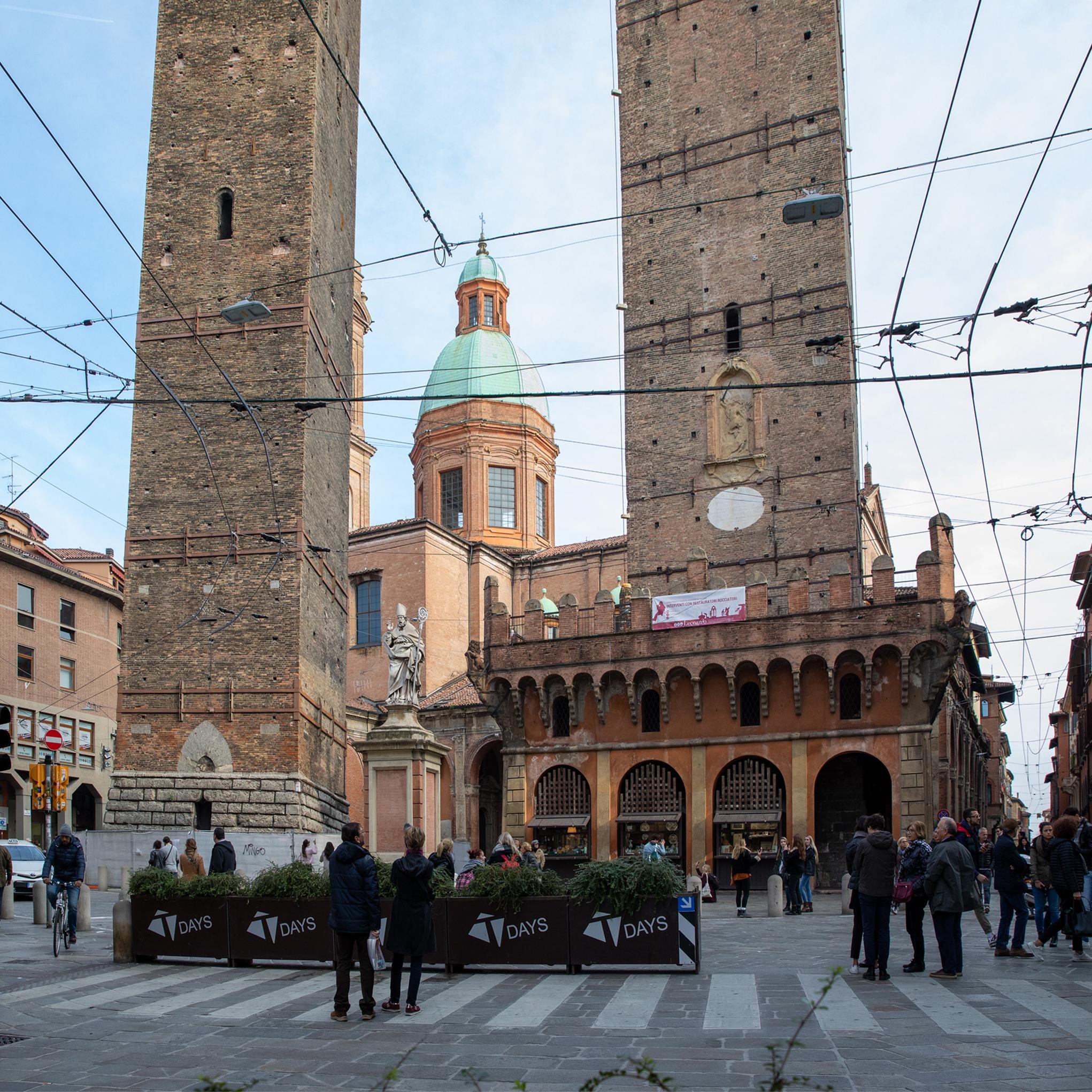
In the past Bologna was one of the cities that had the most towers in all Italy: it counted more than 200 towers just in the first circle of walls. The two towers of Bologna, Asinelli and Garisenda, are the most famous landmark of Bologna. They were built between the 12th and 13th Century, at the time when Italian medieval Communes reached their highest development.
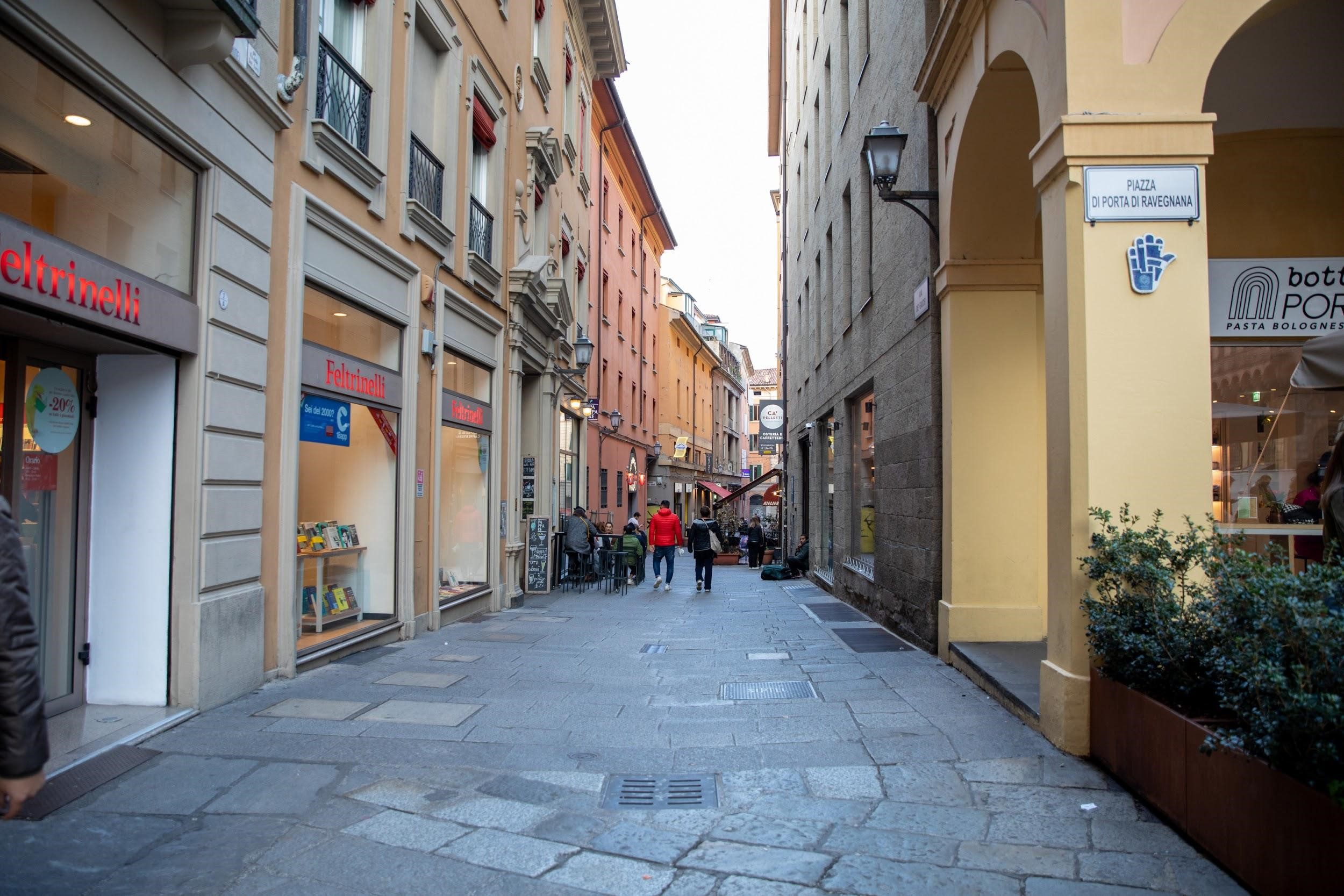
Continuing on Via Zamboni, through via dei Giudei you reach the Jewish Ghetto. The ancient Jewish ghetto, located in the Medieval heart of Bologna, still retains its original structure: many little streets with covered bridges and tiny windows. Here lived an entire community that, starting from 1556, was forced to live in this specific part of the city by the State and the Church. Jews in Bologna lived in this area until 1569, when they have been forced to move before receiving a permission to return to their homes. Then, in 1593, though, the last 900 jews remained,were definitely expelled.
The Ghetto is one of the most interesting areas of city centre, defined by the walls of buildings that belonged to wealthy Jewish merchants and bankers and full of many craft shops.
To visit the Ghetto you can follow the stops indicated by the map in the shape of the Hand of Miriam, a Jewish symbol.
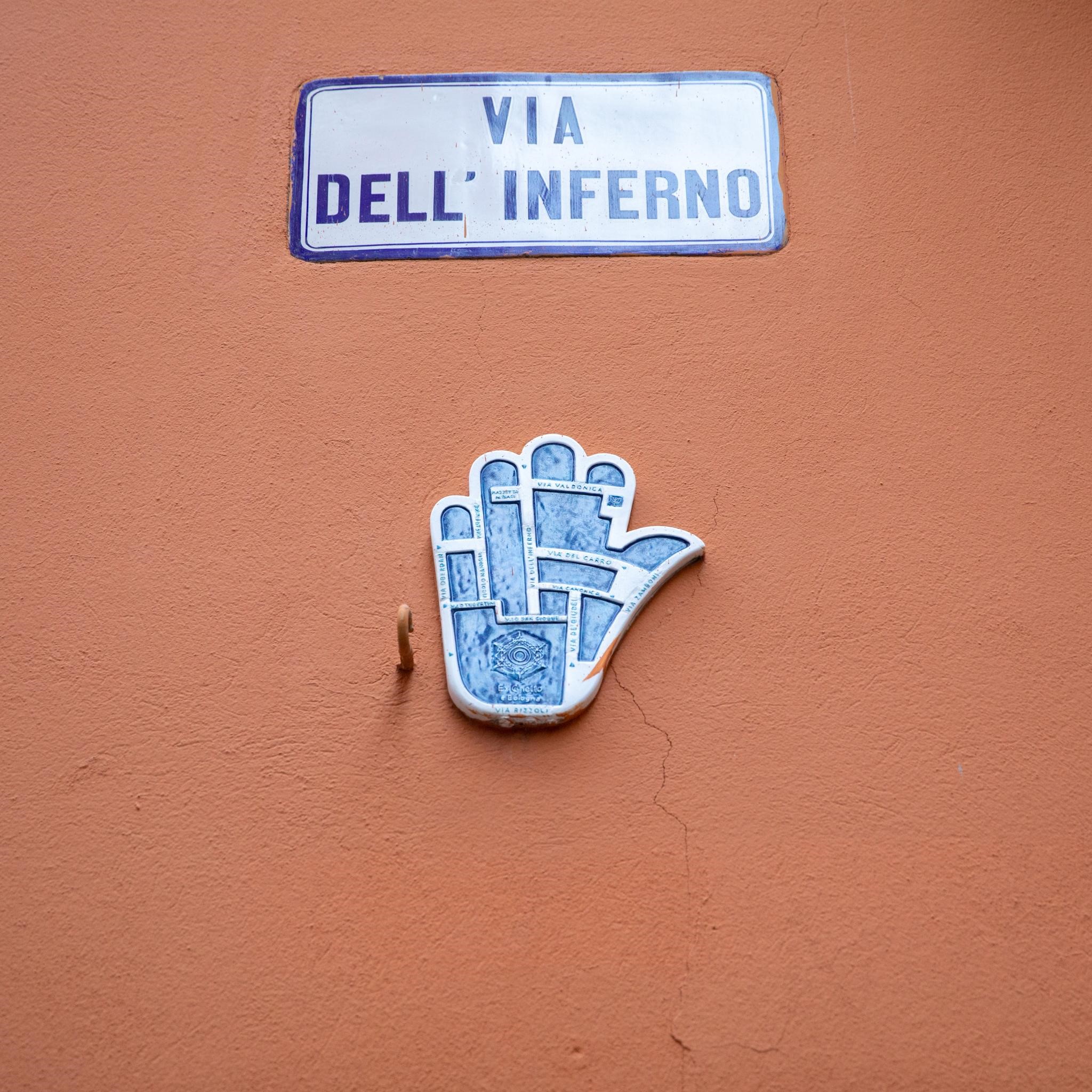
After the Aquaderni gallery, turn left into Via Canonica and then right into Via dell’Inferno, walk straight on until Piazzetta Marco Biagi, that takes its name from a labour law expert that was killed in Via Valdonica in 2002. At the end of the street you find the Jewish Museum. At the entrance there is a gate that is always closed, in order to visit it it’s necessary to ring the doorbell.
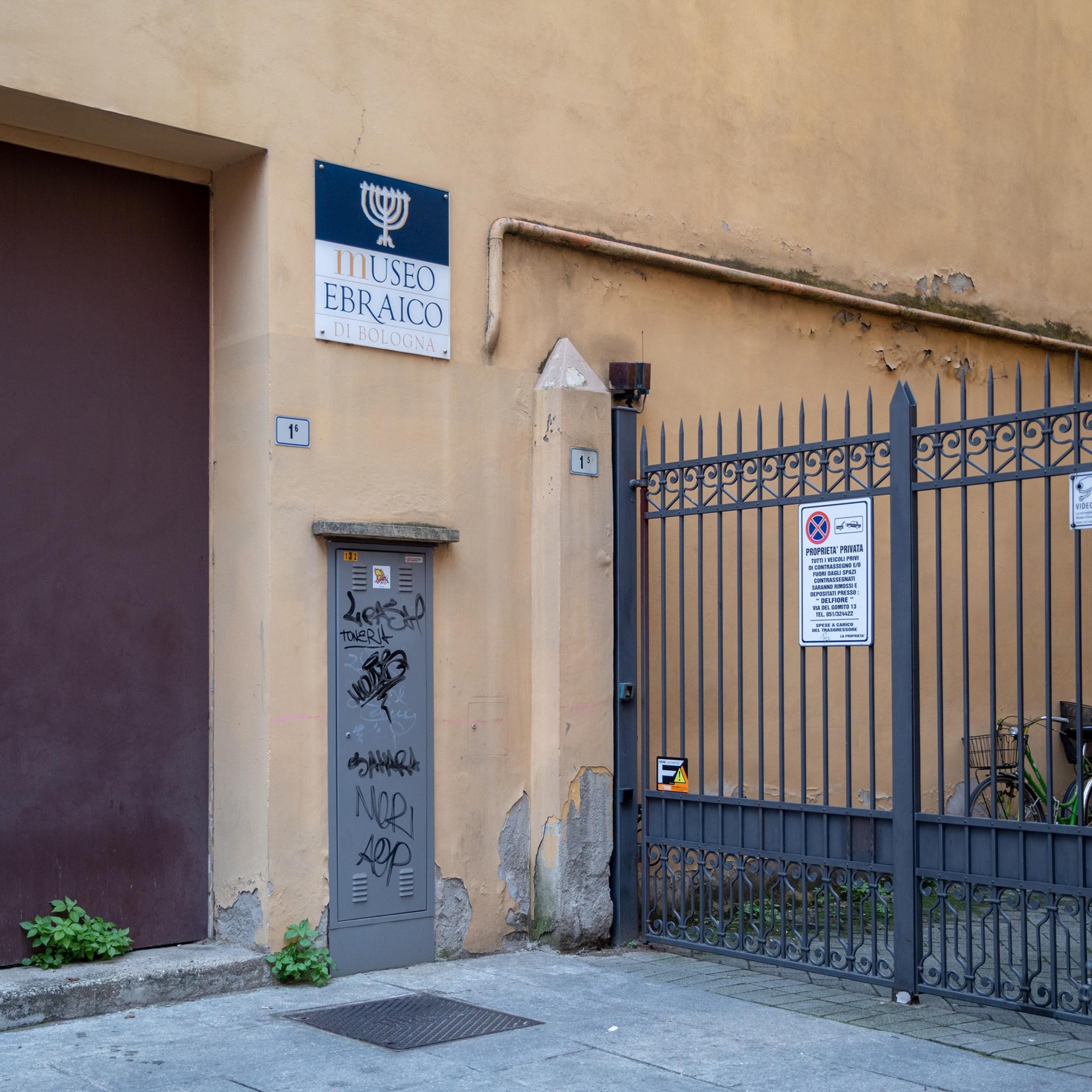
The Bologna Jewish Museum is located in Via Valdonica 1/5 , in the former Jewish Ghetto. It’s inside a 16th Century palace that once belonged to the Pannolini family and is now owned by the Municipality of Bologna. It measures 500 square meters and is divided in three different sections: the ground floor hosts the permanent and temporary sections, whereas the first floor is home of the documentation centre.
If you come back to Via Valdonica and continue until Vicolo Luretta, a narrow alley filled with parked cars, and then take Via Marsala, you go back to Via Zamboni.
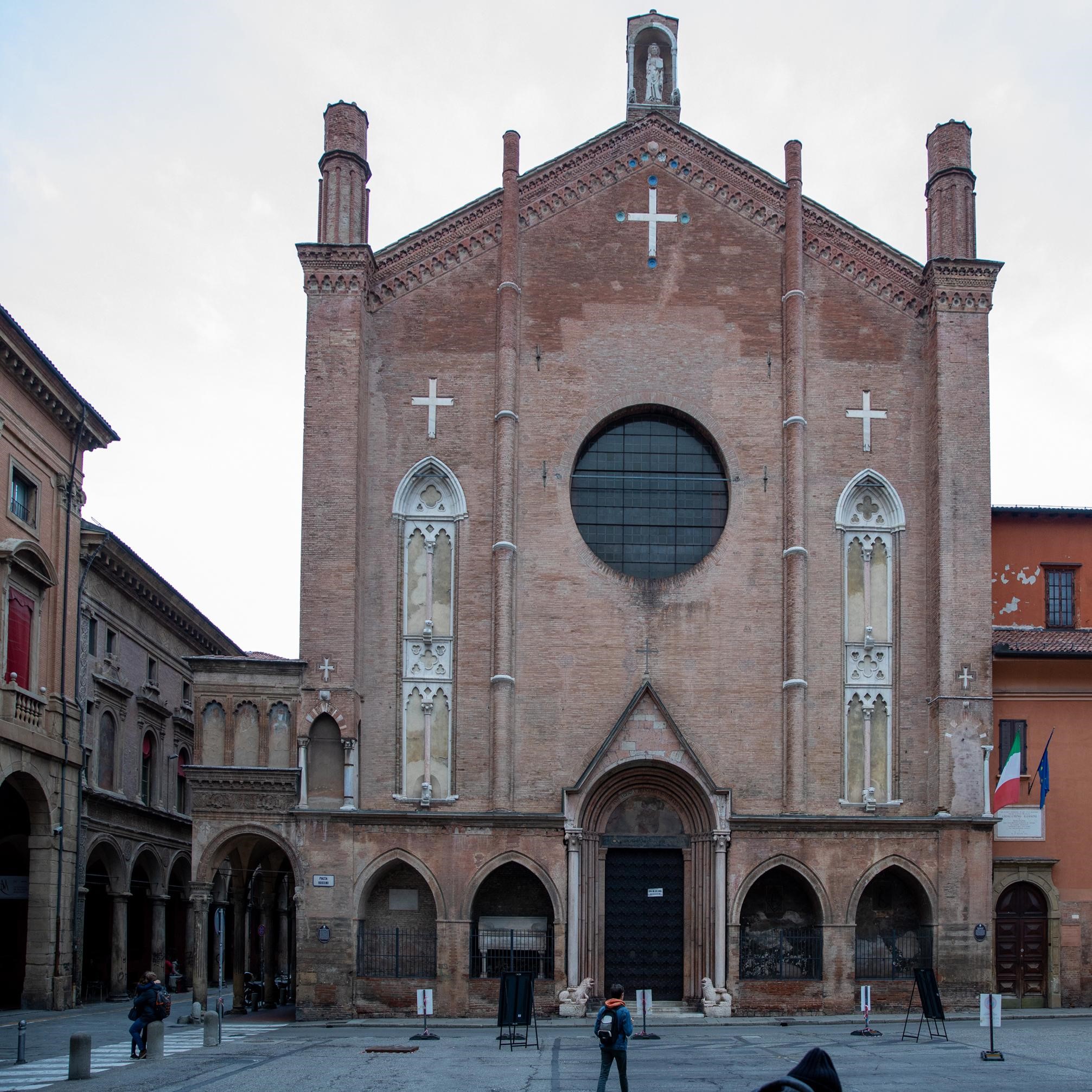
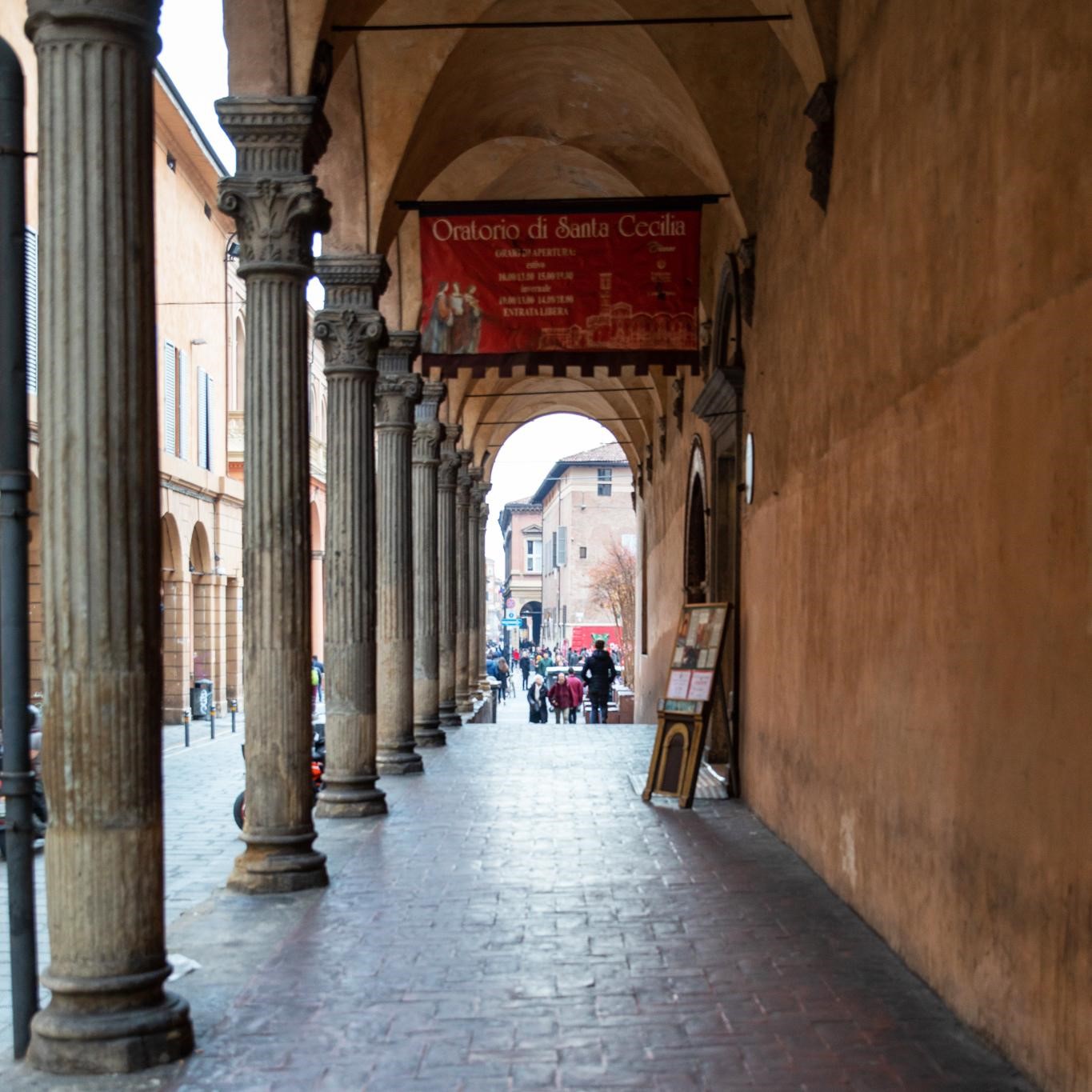
Proceed along the portico until Piazza Verdi, located at the centre of Via Zamboni.
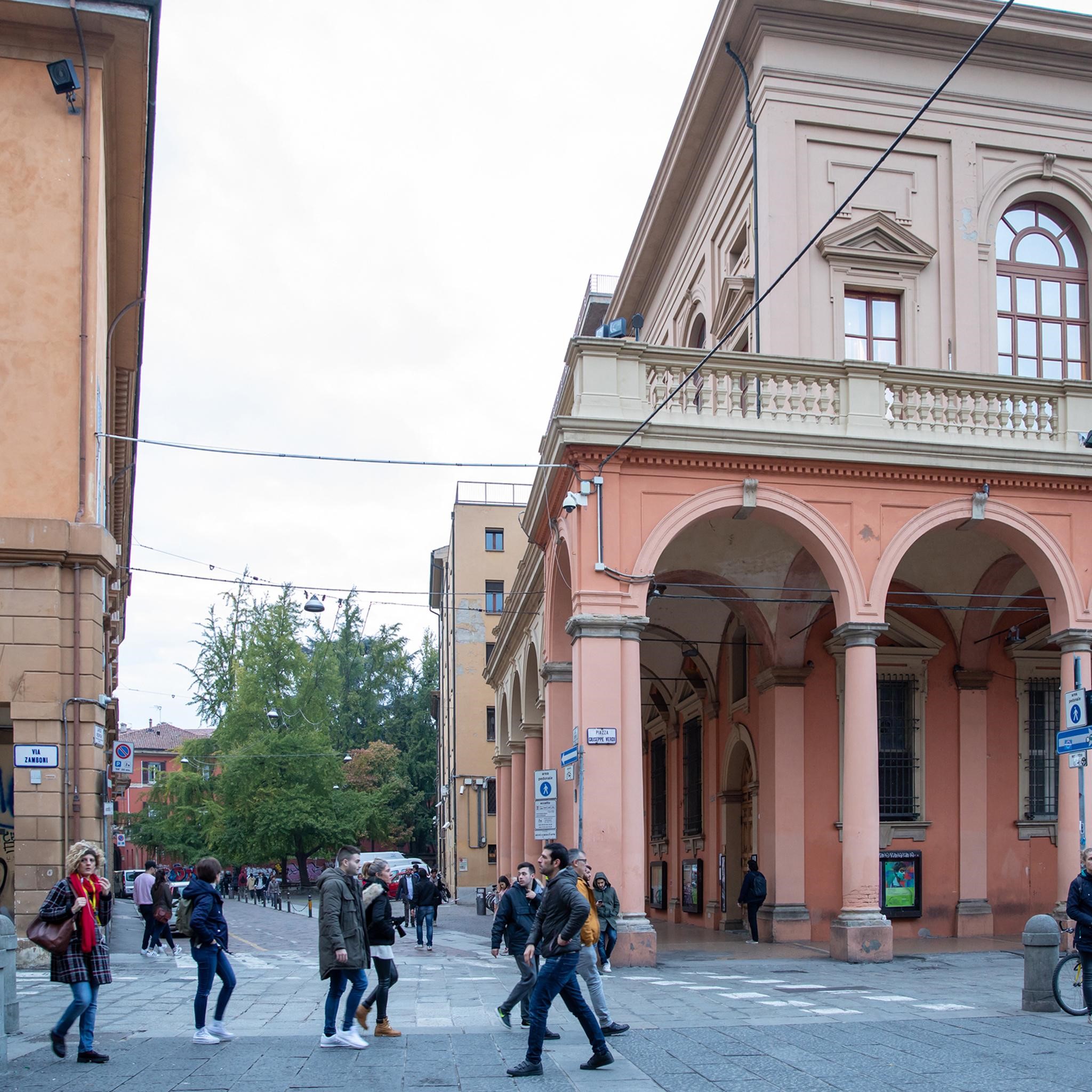
It is the heart of the university district, used as crowded meeting point of students or location for demonstrations. On the square faces also Teatro Comunale, whose entrance is in Largo Respighi.
The Comunale Theatre stands on the site where previously stood the Bentivoglio palace, which was destroyed in 1507. The theatre was designed by Antonio Galli Bibbiena and was inaugurated in 1763. Later over the years, the inside of the theatre was frescoed and several renovations were carried out.
The square in front of the theatre is called Piazza Verdi and occupies the site that was once part of the Scuderie Bentivoglio, the stables of the Bentivoglio family, destroyed along with their palace.
After a few last steps in Via Zamboni, we reach Piazza Scaravilli which is often used as location for events and performances organized by the Municipality or the University.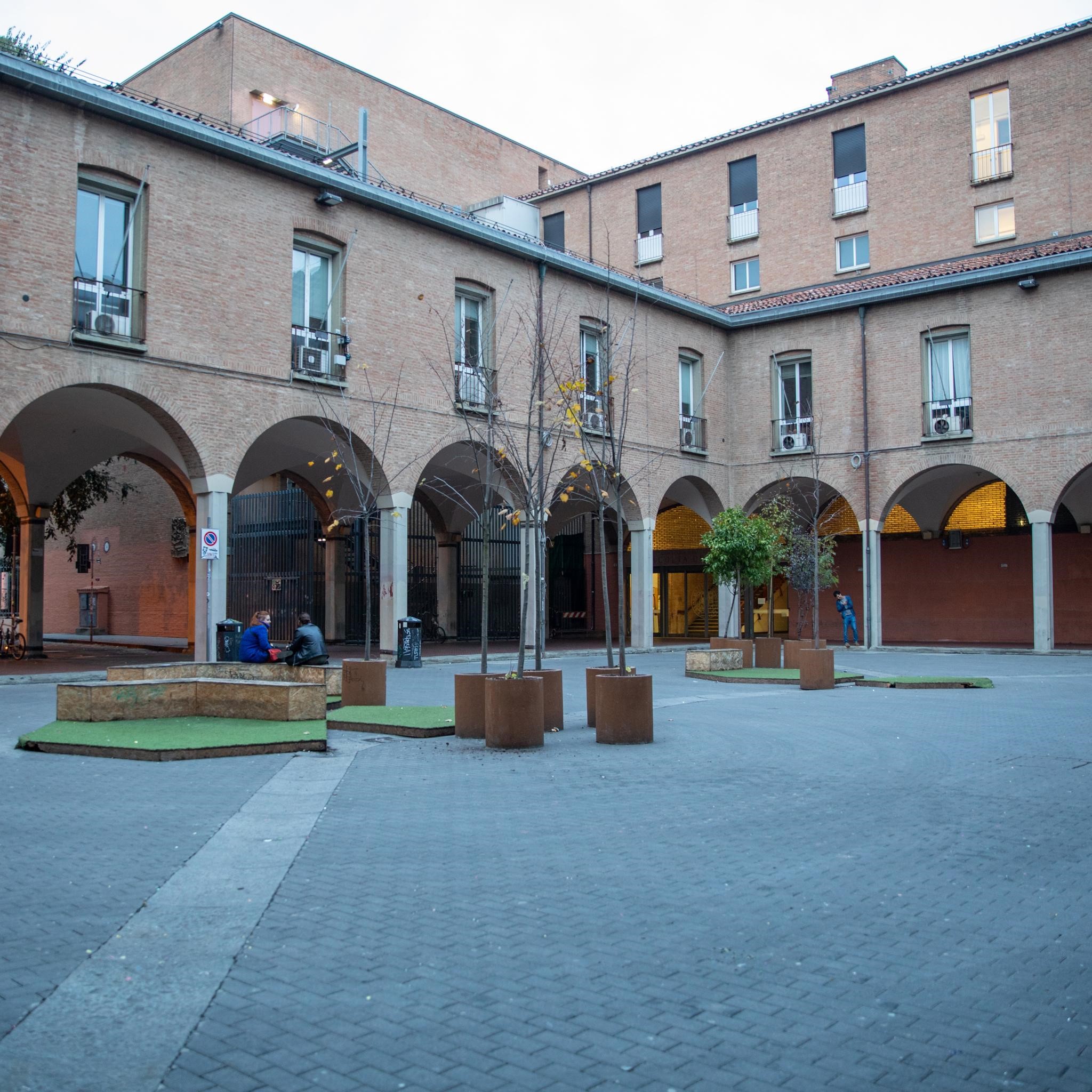
At the end of Via Zamboni you reach Piazza Puntoni and if you turn left you find the entrance to the National Gallery of Bologna (Pinacoteca Nazionale di Bologna)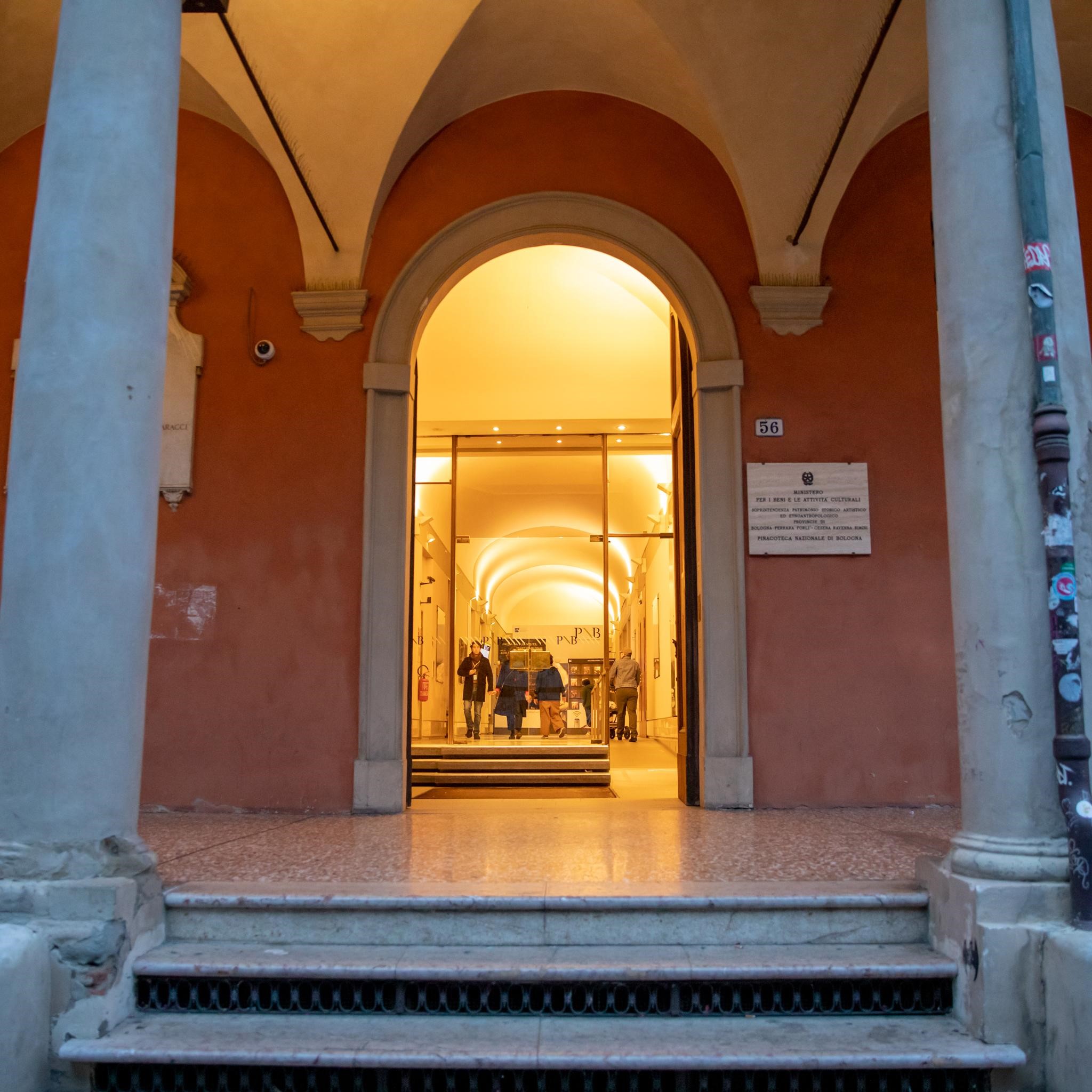
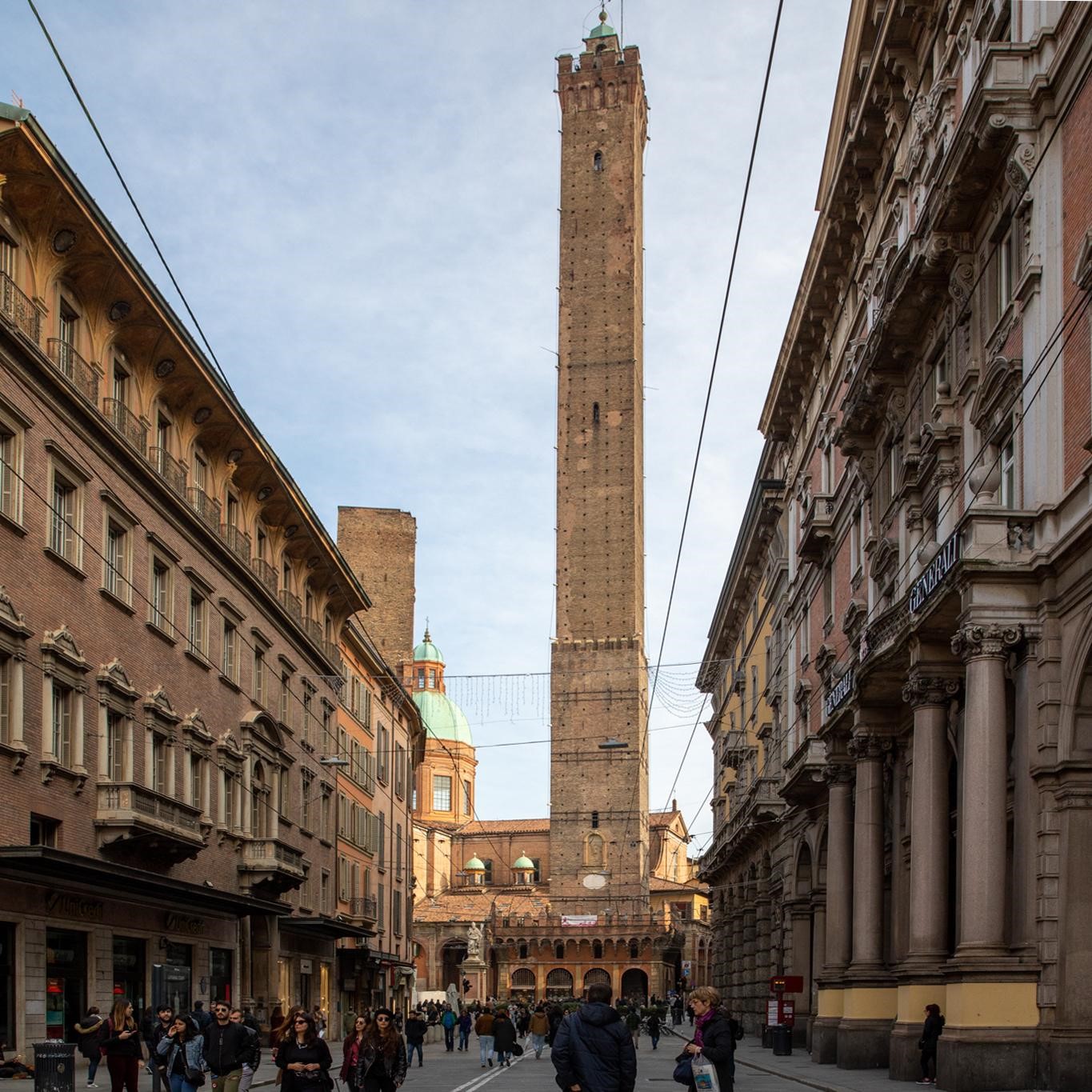
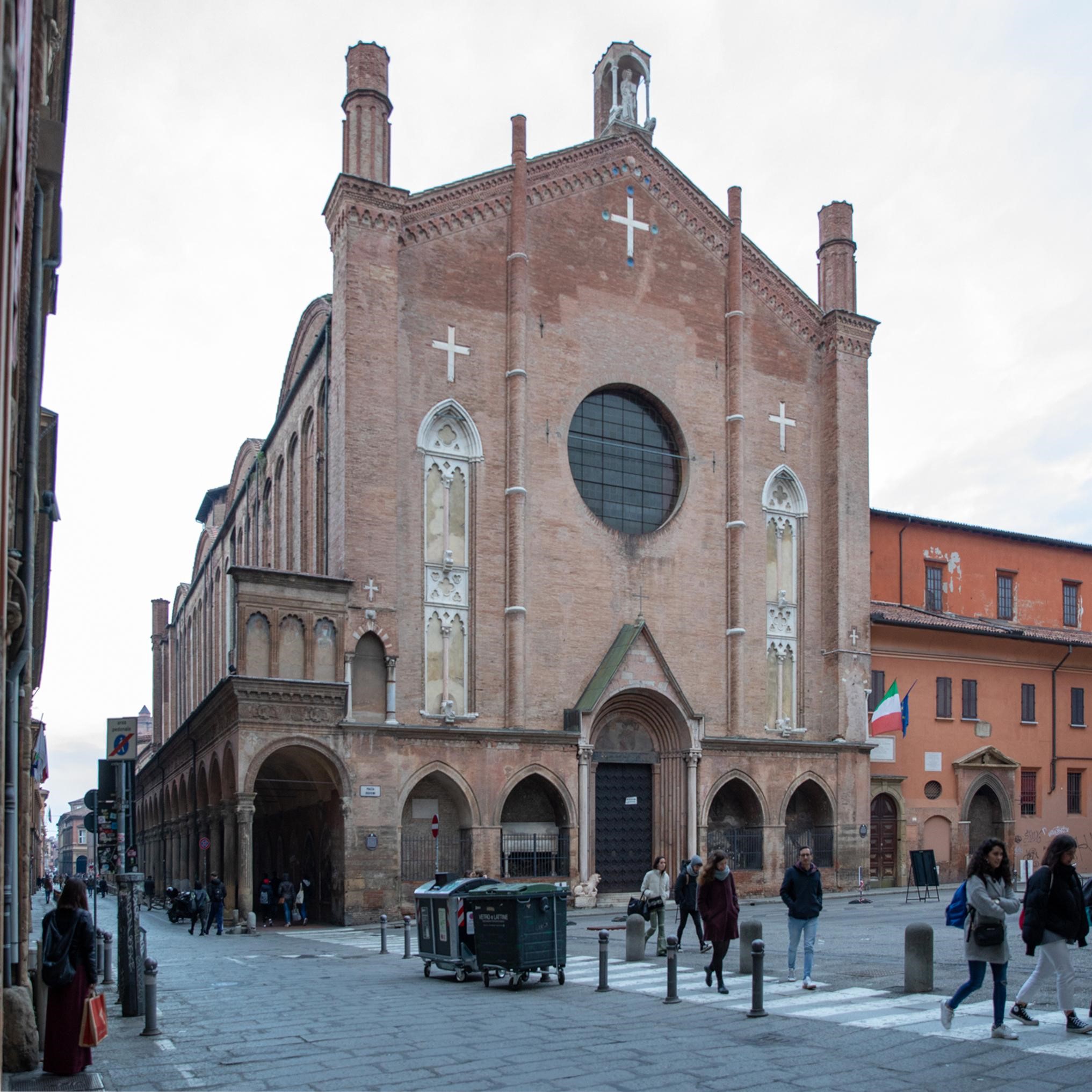
After that you arrive to the Oratory of Saint Cecilia.
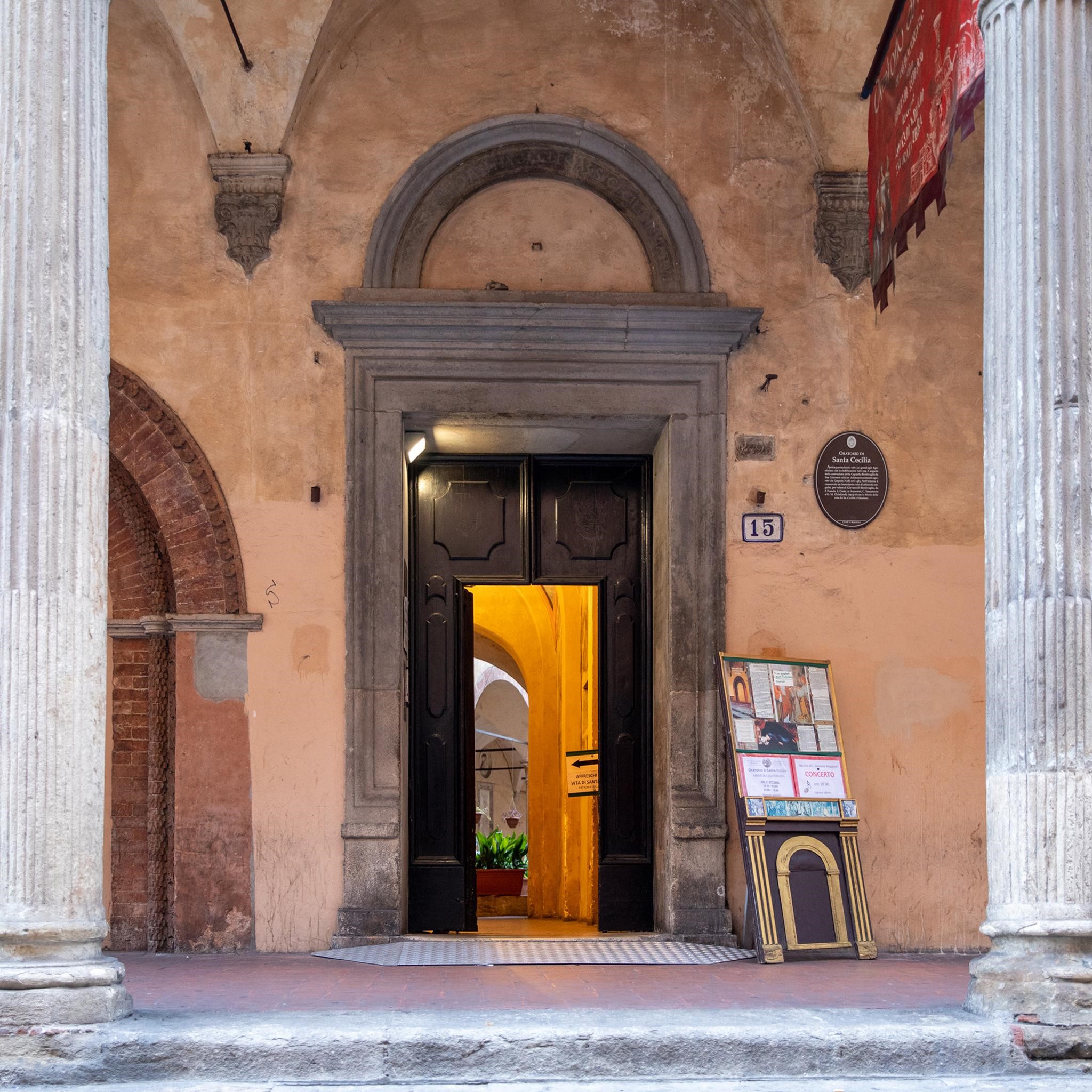
The portico ends with a staircase just before Piazza Verdi and to continue the tour you must go back until Piazza Rossini, go outside the portico and stay along the bike path for a little, to then come back under the portico.
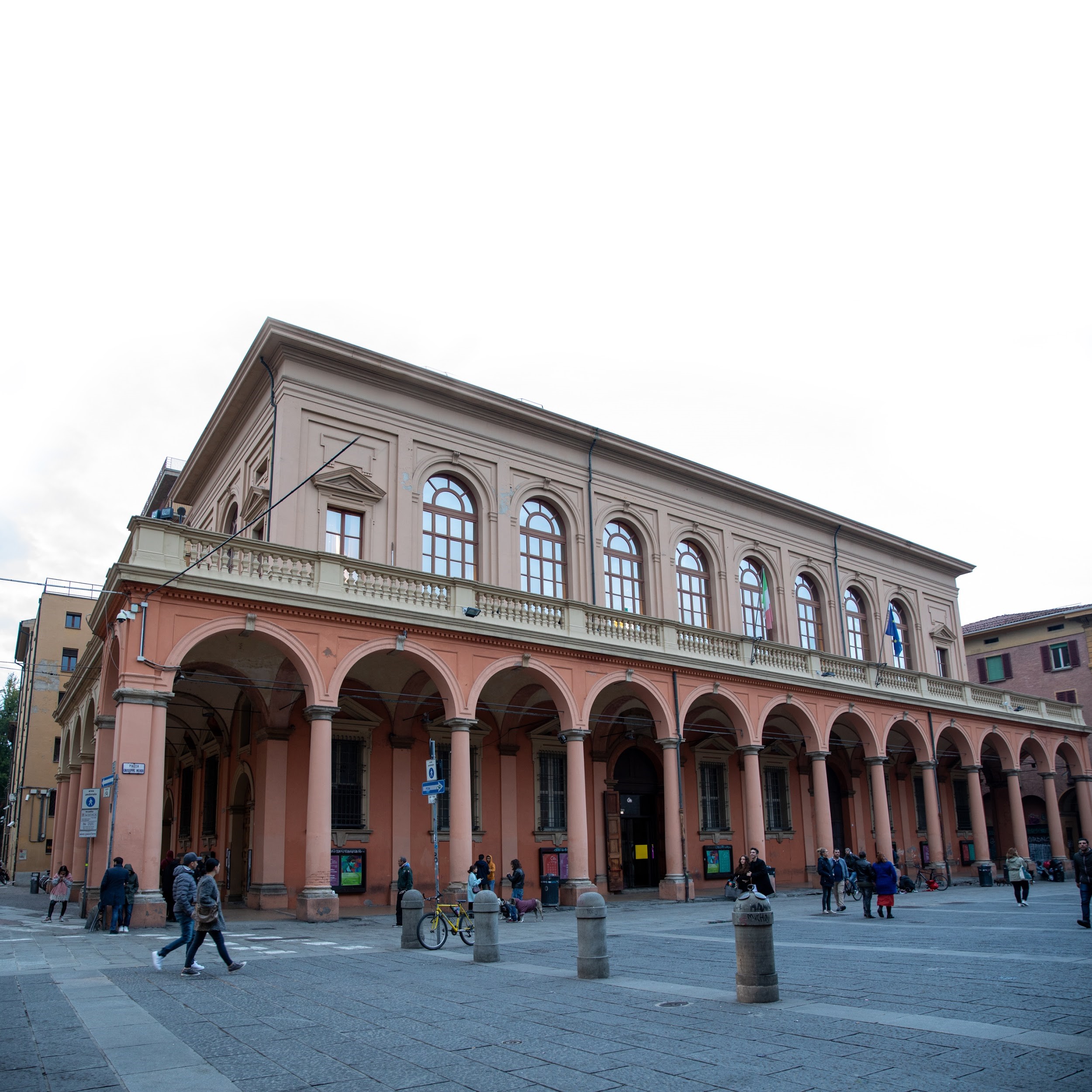
When you reach Piazza Verdi turn slightly and stay on the right outside of the portico of Teatro Comunale because otherwise the way ends with two steps.
In order to enter the theatre ask for the ramp. When you come back to Via Zamboni you can enter again the porticoes on the left side of the street until Piazza Puntoni as they don’t present any obstacles. You can cross it without difficulty and then turn left in Via delle Belle Arti to enter the National Gallery of Bologna. In order to do that, continue in Via delle Belle Arti until n. 52 where you can find a ramp.
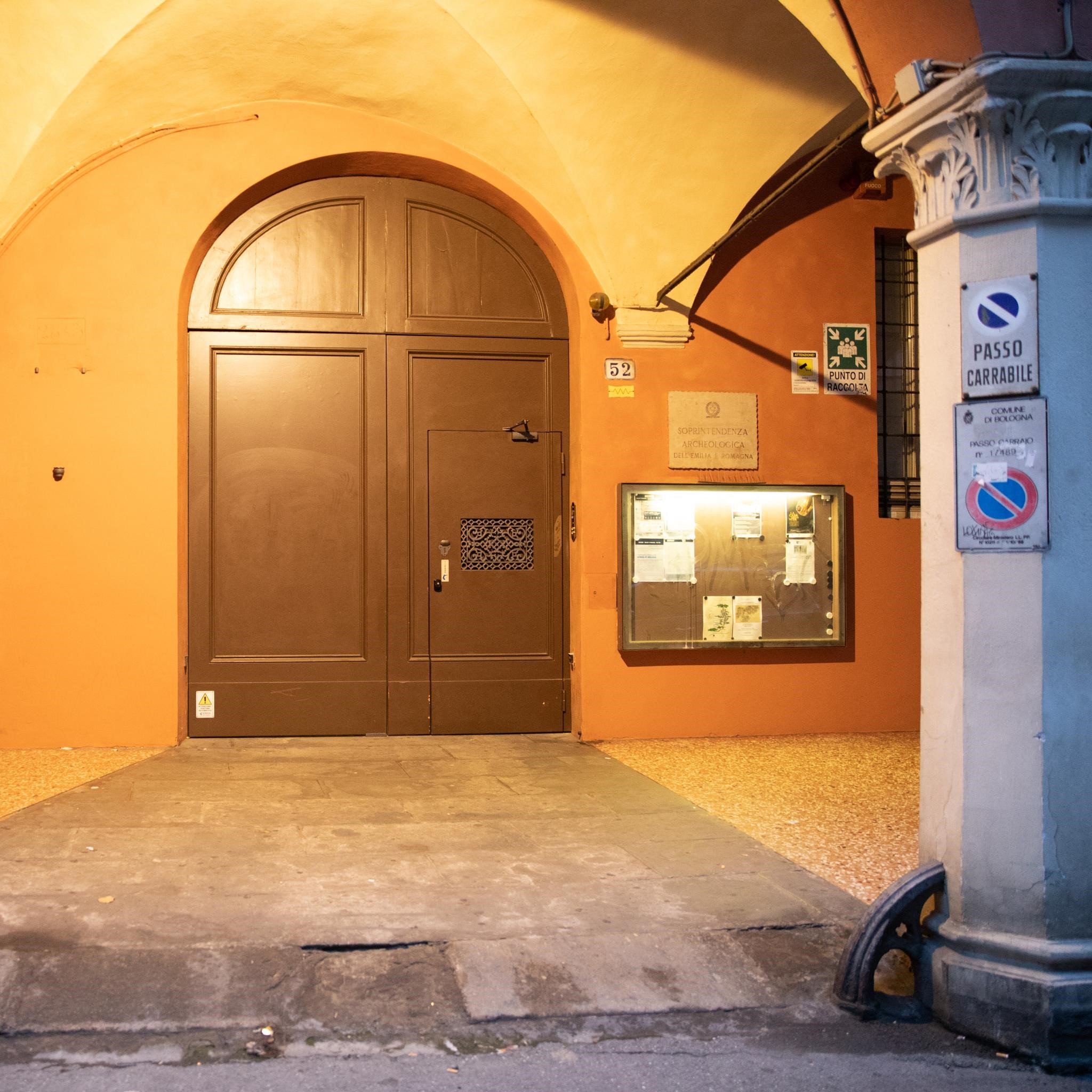
After that, go along the portico on the right whose pavement is smooth and you’ll find the entrance to the Gallery.
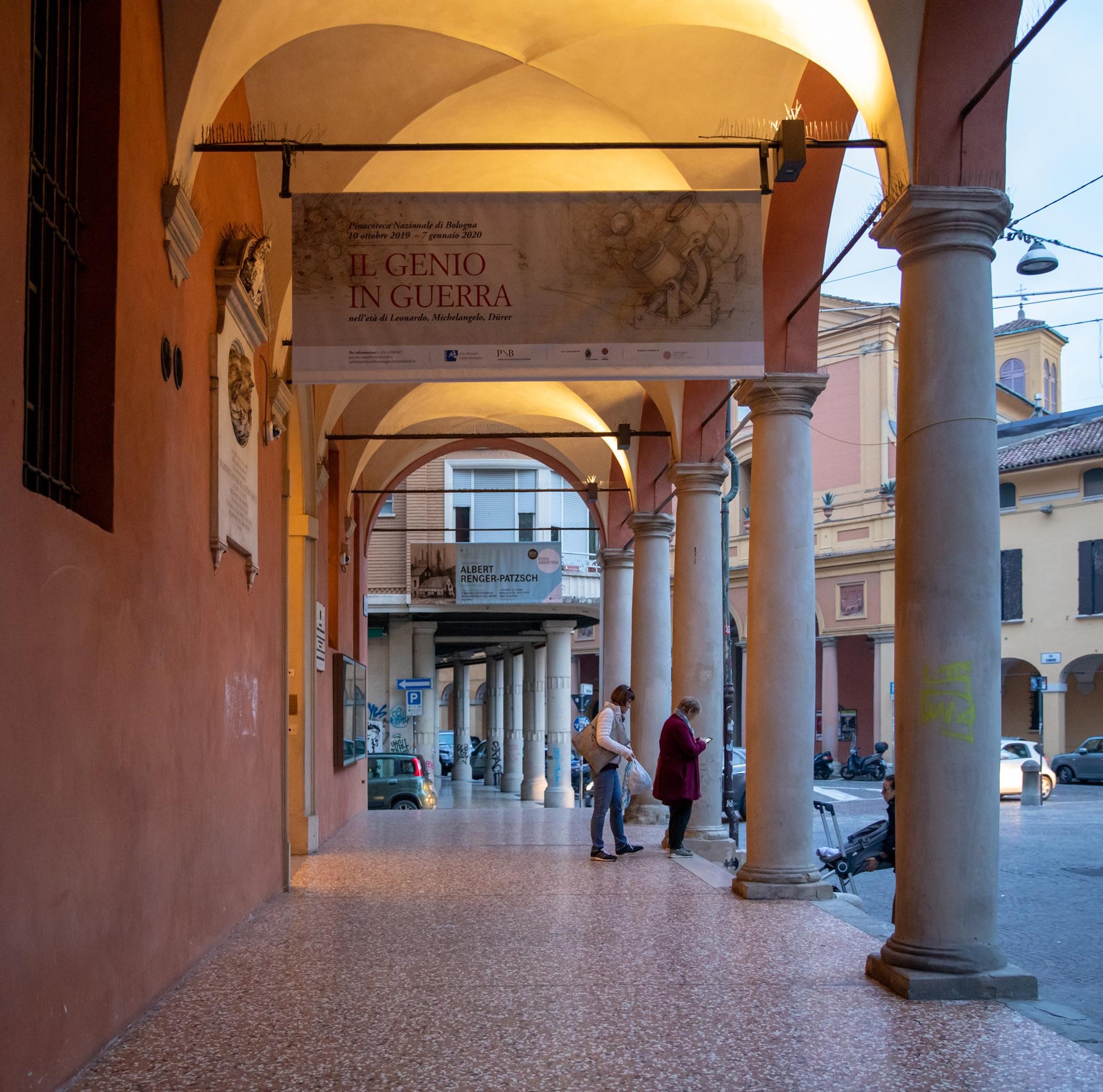
The door is very wide and it’s always open at opening hours. Immediately on the right you’ll find the ticket office: the desk is 114 cm tall. Just after the ticket office there’s a ramp that is 110 cm wide.
The project for the creation of the following itineraries has been promoted by the Municipality of Bologna, Fondazione per l’Innovazione Urbana and the University of Bologna, in collaboration with Accaparlante, Institute for the Blind Francesco Cavazza, Fondazione Gualandi for the deaf, ITcares, Girobussola NPO, MUVet, project MIA open inclusive museums, Bologna Musei, Sistema Museale di Ateneo.